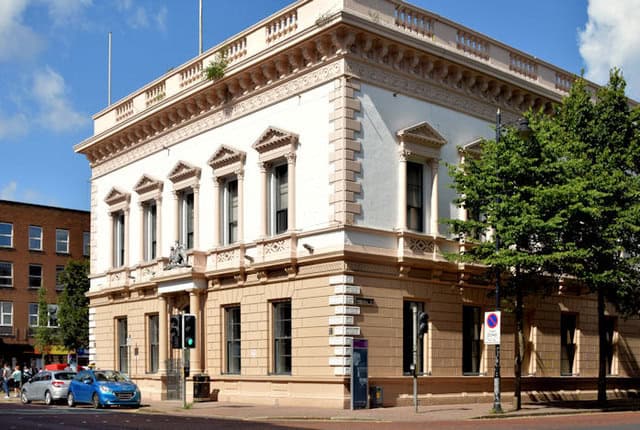Politics
Revitalizing Shared Heritage: Ireland’s Initiative Faces Challenges

The Irish government’s Shared Ireland Initiative (SII) has pledged an additional €1 billion to the Shared Island Fund, aiming to promote reconciliation and economic growth across the island. This commitment, agreed upon in January 2025, extends funding through to 2035. While the initiative has delivered notable projects in Northern Ireland, questions arise regarding its engagement with the diverse cultural landscape, particularly among Protestant and Dissenter communities.
Since its inception, the Shared Island Initiative has facilitated several flagship projects, including the Ulster Canal, the Narrow Water Bridge, and the A5 road upgrade. Other developments, such as Casement Park and the Battle of the Boyne site, have been well-received by many. Despite these advancements, Professors Emeriti Joseph Ruane and Jennifer Todd have highlighted a significant oversight in their recent paper: the initiative’s focus remains predominantly organizational and does not adequately address grassroots diversity or the complex constitutional discussions surrounding unification.
The initiative, spearheaded by parties like Fianna Fáil and Fine Gael, faces criticism for the geographical focus of its projects, which predominantly serve areas with Catholic populations. This raises concerns about the effectiveness of their efforts in fostering unity among all communities, including Protestants and Dissenters.
To broaden its grassroots engagement, the Shared Island Initiative could consider investing in historically significant buildings that resonate with Protestant and unionist heritage. Two notable examples in Belfast, Craigavon House and the Assembly Rooms, stand as reminders of the region’s diverse political history. Craigavon House, once the residence of Sir James Craig, the first Prime Minister of Northern Ireland, holds sentimental value for many within the unionist community.
Meanwhile, the Assembly Rooms on Waring Street have a rich history, having hosted critical events such as a meeting in 1786 that successfully blocked the establishment of a slave-trading company. It also served as the venue for the Belfast Harp Festival in 1792, which was pivotal in the development of Irish music and culture. The building is linked to significant figures in Irish radicalism, including Henry Joy McCracken, a leader in the United Irish movement.
Investing SII funds into the restoration of these buildings could demonstrate the Dublin government’s commitment to respecting and embracing the island’s diverse heritage. Such actions could also foster dialogue among various communities, including those with more secular or radical viewpoints, around the significance of these sites.
The potential reaction from unionists to such funding for Craigavon House would be particularly revealing. As the Shared Ireland Initiative progresses, it will be vital for it to engage meaningfully across the spectrum of Northern Irish identity, ensuring that all voices are heard and represented.
In conclusion, while the Shared Island Initiative has made strides in economic development, its future effectiveness will depend on its ability to connect with all parts of society. By acknowledging and supporting the historical significance of sites important to Protestant and Dissenting communities, the initiative could take a significant step towards fostering genuine reconciliation and unity on the island.
-

 Top Stories3 months ago
Top Stories3 months agoTributes Surge for 9-Year-Old Leon Briody After Cancer Battle
-

 Entertainment4 months ago
Entertainment4 months agoAimee Osbourne Joins Family for Emotional Tribute to Ozzy
-

 Politics4 months ago
Politics4 months agoDanny Healy-Rae Considers Complaint After Altercation with Garda
-

 Top Stories4 months ago
Top Stories4 months agoIreland Enjoys Summer Heat as Hurricane Erin Approaches Atlantic
-

 World5 months ago
World5 months agoHawaii Commemorates 80 Years Since Hiroshima Bombing with Ceremony
-

 Top Stories3 months ago
Top Stories3 months agoNewcastle West Woman Patricia Foley Found Safe After Urgent Search
-

 Top Stories5 months ago
Top Stories5 months agoFianna Fáil TDs Urgently Consider Maire Geoghegan-Quinn for Presidency
-

 World5 months ago
World5 months agoCouple Convicted of Murdering Two-Year-Old Grandson in Wales
-

 World5 months ago
World5 months agoGaza Aid Distribution Tragedy: 20 Killed Amid Ongoing Violence
-

 World5 months ago
World5 months agoAristocrat Constance Marten and Partner Convicted of Infant Murder
-

 Top Stories4 months ago
Top Stories4 months agoClimbing Errigal: A Must-Do Summer Adventure in Donegal
-

 Top Stories4 months ago
Top Stories4 months agoHike Donegal’s Errigal Mountain NOW for Unforgettable Summer Views









